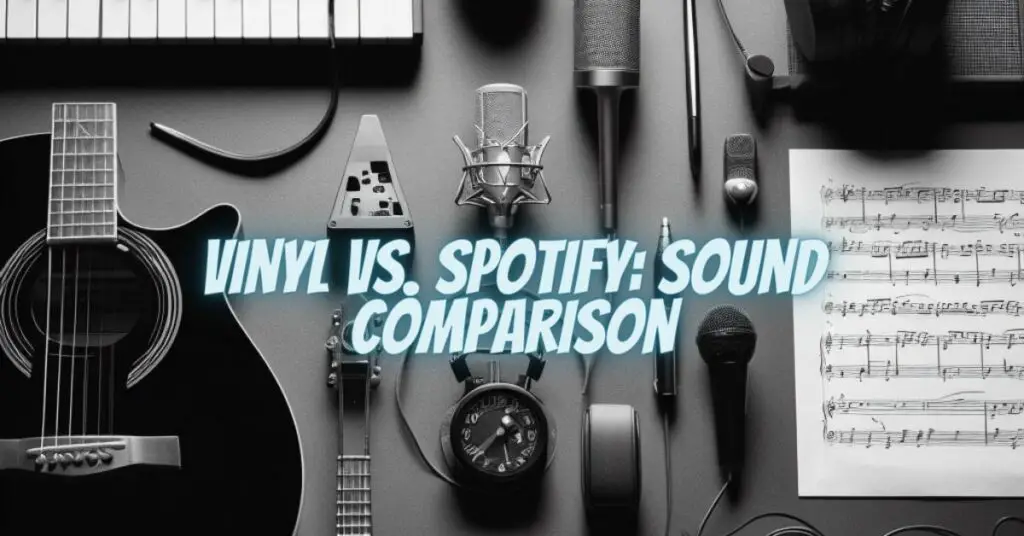The debate over whether vinyl records sound better than music streamed through platforms like Spotify is a topic that has sparked heated discussions among audiophiles and music enthusiasts. Both vinyl and digital streaming offer unique listening experiences, each with its own set of advantages and drawbacks. In this article, we’ll explore the characteristics of vinyl records and Spotify to compare the audio quality, authenticity, and subjective appeal of these two popular music formats.
Vinyl Records: The Analog Warmth
- Audio Quality Vinyl records are known for their warm, rich, and full-bodied sound. The analog format captures nuances and imperfections in the music that can be lost in digital compression. Vinyl’s analog groove is physically etched with the audio waveform, allowing for a more detailed and authentic representation of the music.
- Tangible Experience Playing vinyl records is a tactile and immersive experience. The act of selecting a record, carefully placing it on the turntable, and gently lowering the stylus provides a connection to the music that digital streaming can’t quite replicate. Audiophiles value the ritual and nostalgia associated with vinyl.
- Vintage Appeal Vinyl records carry a sense of nostalgia, evoking memories of an era when LPs were the primary medium for music consumption. The analog format, with its large album art and liner notes, offers a tangible connection to the artist and the album’s creative process.
Spotify: The Convenience of Digital Streaming
- Convenience and Accessibility Spotify and other digital streaming platforms provide unprecedented convenience. With millions of songs available at your fingertips, listeners can instantly access a vast library of music without the need for physical media. It’s ideal for exploring new artists and genres.
- Sound Quality Spotify offers varying levels of sound quality, with the highest setting offering 320 kbps (kilobits per second) in the Ogg Vorbis format. While this quality is generally considered good and can sound impressive on quality audio equipment, it still involves digital compression and can lack the warmth and detail of vinyl.
- Portability and Versatility Digital streaming platforms are compatible with a wide range of devices, from smartphones and tablets to smart speakers and computers. This portability and versatility make it easy to enjoy music on the go and in different settings.
Subjective Considerations
The debate over vinyl versus Spotify extends beyond technical aspects and includes personal preferences and priorities:
- Authenticity: Vinyl enthusiasts often argue that the analog format preserves the authenticity of the music, capturing the artist’s original intentions without digital alterations.
- Nostalgia and Ritual: Vinyl records offer a sense of nostalgia and a ritualistic experience, making them appealing to those who appreciate the physicality of music.
- Convenience: Digital streaming platforms like Spotify prioritize convenience and accessibility, allowing users to explore a vast catalog effortlessly.
- Audiophile Experience: Audiophiles, who value audio fidelity above all else, may lean toward vinyl for its analog warmth and richness.
The comparison between vinyl and Spotify is not simply a matter of one being better than the other. It’s a matter of personal preference, listening environment, and the value you place on the experience of music consumption. Vinyl records offer a unique and authentic analog warmth that many audiophiles cherish, while Spotify provides a convenient and versatile way to access a vast music library in a digital format.
In the end, whether vinyl sounds better than Spotify is a subjective judgment. Some may prefer the tactile, vintage appeal of vinyl, while others may favor the convenience and accessibility of digital streaming. Ultimately, it’s about enjoying the music in a way that brings the most satisfaction and fulfillment to the individual listener.

